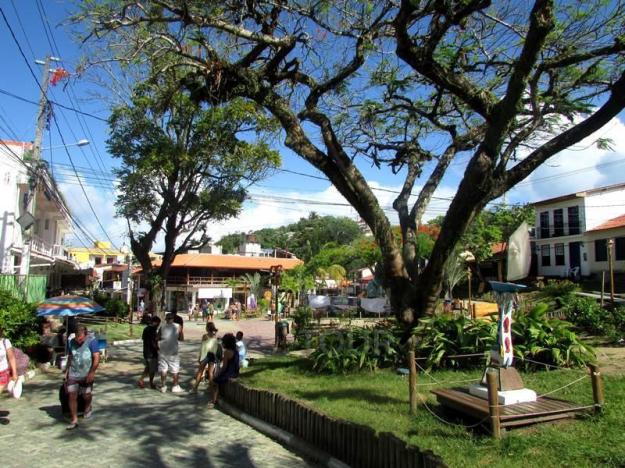Morro de São Paulo is a stunning destination, blessed with seven paradisiacal beaches that captivate its visitors. Each one has its own personality and unique features. Originally, they were known as
Morro de São Paulo is surrounded by seven paradisiacal beaches, originally known as First, Second, Third, Fourth, and Fifth Beach (also called Praia do Encanto), as well as Gamboa Beach and Garapuá Beach. At the First Beach, visitors have the unique opportunity to enjoy the breathtaking view of the island from the top of the zip line. The Second Beach is the liveliest, offering a wide range of services and providing greater convenience for tourists. During the high season, it is common to enjoy live music at almost all the restaurants and bars on this beach. At night, visitors are greeted with a luau, a variety of drink options, and a relaxed atmosphere to make new friends and flirt with interesting people from different backgrounds and cultures. Morro de São Paulo manages to bring together people from all over the world, which is an attraction in itself.
In addition to its stunning natural beauty, Morro de São Paulo is also fascinating for its rich history during Brazil's colonial period. This history has left a valuable material and immaterial heritage, such as churches, lighthouses, and cultural events like the Feast of Saint Benedict. The local cuisine, with strong Afro-Indigenous-Brazilian influences and seasoned with pepper and palm oil, makes this place even more special.
Due to all these attributes, Morro de São Paulo attracts visitors from various countries, including Brazil. The island is part of the Tinharé Archipelago, along with the islands of Boipeba, Cairu, and 23 other islands, with Cairu being the only archipelago-municipality in Brazil. Morro de São Paulo is located about 60 km south of Salvador, near the municipality of Valença, in Bahia.
Access to the island is possible only by boats and speedboats, which depart from the pier of Valença or from the Bom Jardim Wharf; by catamaran, departing from Salvador; or by plane. On the island, cars are not allowed, and luggage transportation is carried out by professionals using hand carts, called "taxis". However, today there are already vehicles (jeeps, buses, and tractors) that travel along the roads parallel to the beaches, in Zimbo, Campo da Mangaba, and the village of Gamboa.
Discover the beauty of Morro de São Paulo with IslandTour! We offer catamaran and semi-terrestrial transportation options to suit your needs and ensure a comfortable and enjoyable journey.
By choosing the catamaran, you will enjoy a fast and direct sea journey. With an average of 30 minutes less travel time compared to the semi-terrestrial route, it's the ideal option for those looking to reach their destination as quickly as possible, without compromising on comfort and safety.
On the other hand, semi-terrestrial transportation is a versatile and convenient alternative. With more schedules available, this option allows greater flexibility to fit perfectly into your itinerary. Moreover, the combination of land and sea routes significantly reduces the possibility of seasickness, providing a more pleasant trip for those who are sensitive to the motion of the ocean.
No matter which option you choose, IslandTour is committed to providing quality service, ensuring that your journey is an unforgettable experience. Book your ticket with us now and start planning your adventure in Morro de São Paulo!





